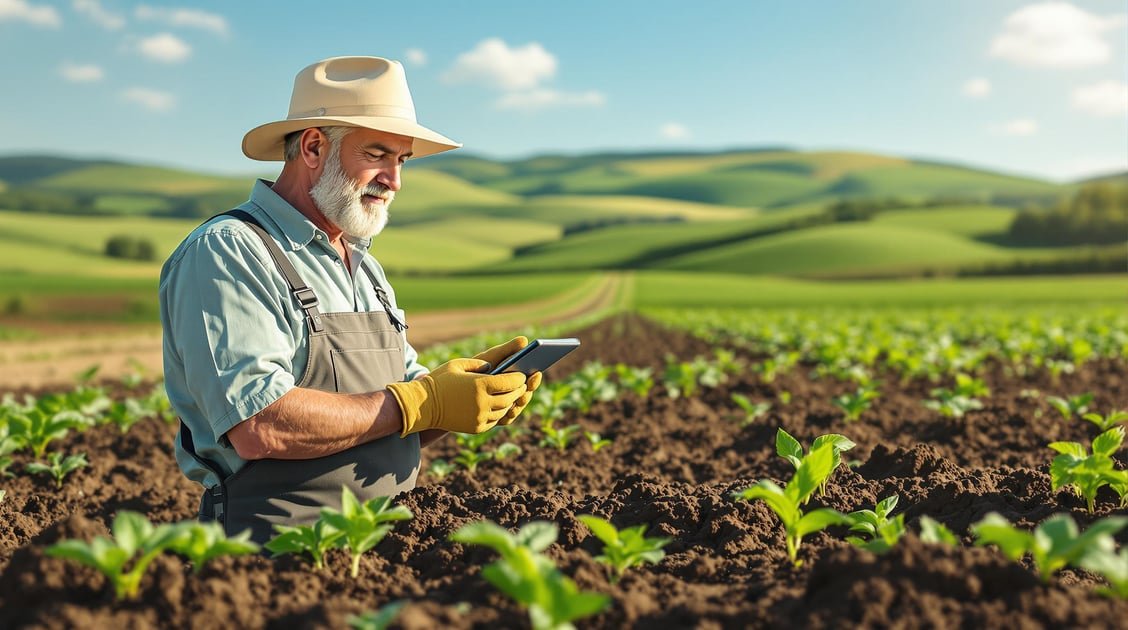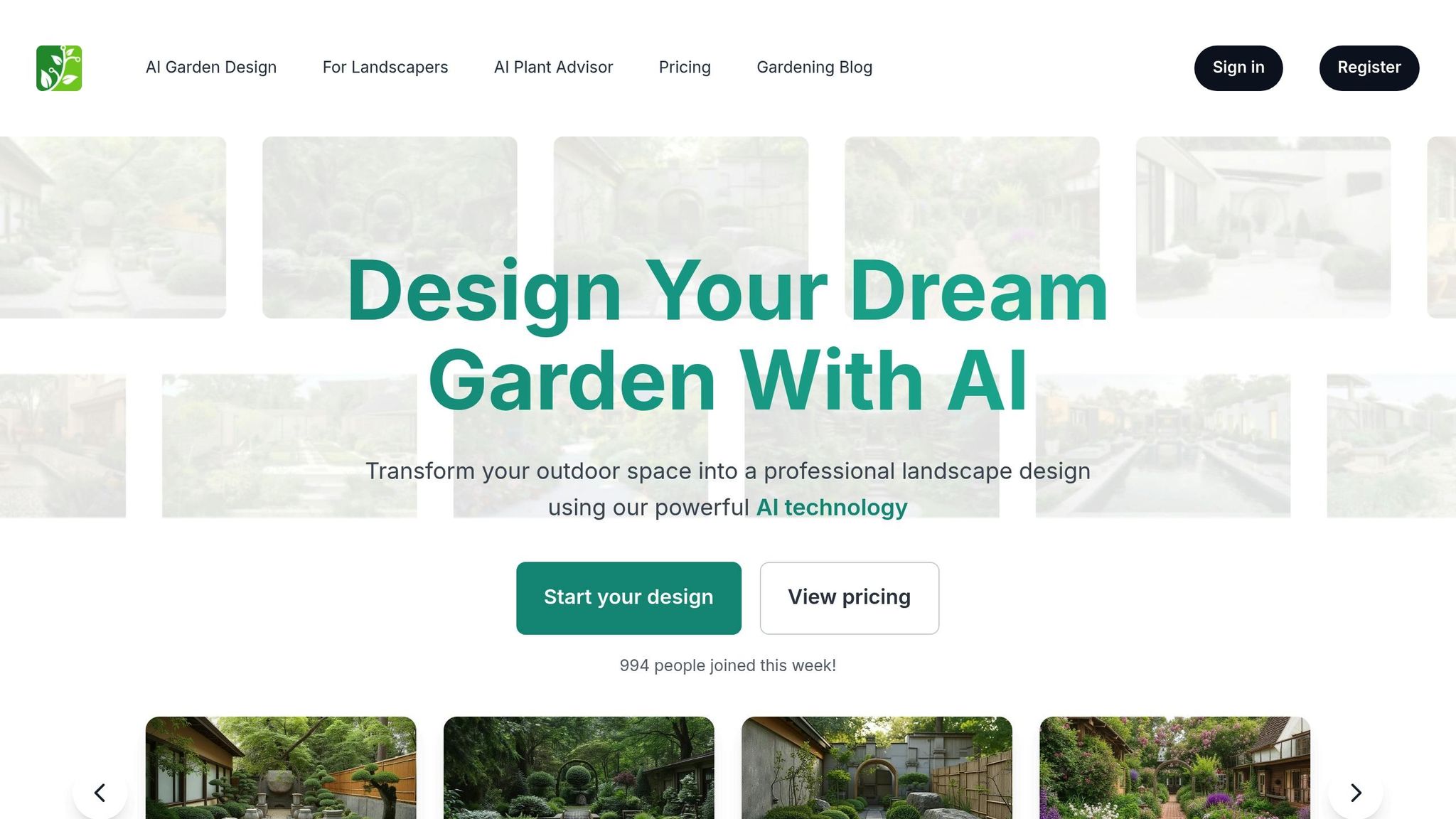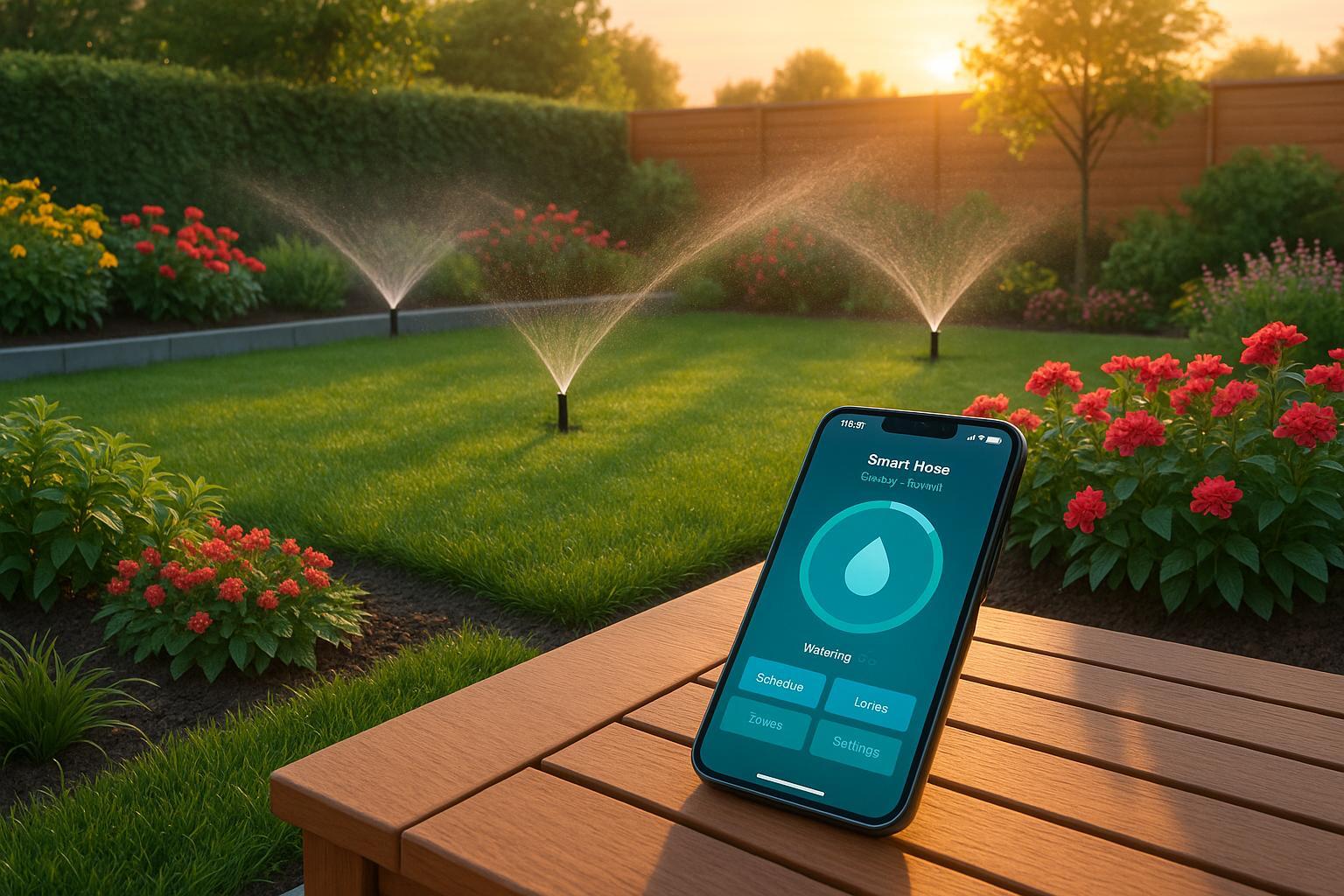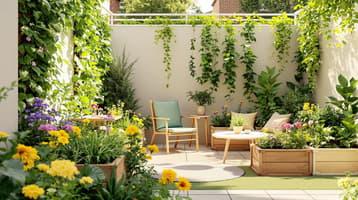AI Tools for Soil Health Monitoring

AI tools are transforming how gardeners and farmers monitor soil health. Traditional soil testing is slow and limited, but AI-powered systems provide real-time data on moisture, nutrients, and pH levels, helping you make faster, smarter decisions.
Key benefits of AI soil monitoring:
- Real-time alerts: Quickly address issues like low moisture or nutrient deficiencies.
- Predictive insights: Prevent plant stress before it’s visible.
- Cost savings: Reduce manual testing and labor.
- Comprehensive coverage: Track soil conditions across your entire garden or farm.
Top AI technologies include:
- IoT sensors: Measure moisture, pH, temperature, and nutrients directly in the soil.
- Machine learning: Detect patterns and recommend actions.
- Remote sensing: Use drones or satellites to map soil and crop health.
Example tool: AIGardenPlanner integrates soil data with AI to recommend plants, create care schedules, and provide real-time alerts. Plans range from $15 one-time to $99/month for advanced features.
AI tools make soil monitoring easier, faster, and more precise. Start using them to improve your garden or farm today.
AI's Role in Soil Monitoring
Manual vs. AI Soil Testing
Traditional soil testing requires collecting samples, sending them to a lab, and waiting days or even weeks for results. This process provides only a single snapshot of soil conditions. In contrast, AI-powered monitoring uses in-field sensors and advanced analytics to deliver continuous, near-real-time data from multiple locations. This approach uncovers spatial differences that traditional methods often overlook.
Current AI Soil Technologies
Here are the key technologies driving AI-based soil monitoring:
- IoT-enabled sensors: Measure factors like moisture, temperature, pH, and nutrient levels directly in the field.
- Machine learning models: Identify patterns, predict potential problems, and suggest corrective actions.
- Remote sensing: Satellites or drones create detailed maps of soil properties and monitor crop health.
Main Advantages of AI Monitoring
AI-based soil monitoring offers several clear benefits:
- Real-time alerts: Enable quick action to address soil issues before they escalate.
- Predictive insights: Help prevent plant stress before it becomes visible.
- Cost savings: Reduce the need for manual labor and lab testing.
- Consistent precision: Deliver automated, accurate measurements without human error.
- Comprehensive coverage: Assess soil variability across an entire site.
Purdue researchers' AI-powered soil sensors could improve ...

Leading AI Soil Monitoring Tools
Modern AI tools have transformed the way we monitor and care for soil in gardens and landscapes. These systems provide detailed insights, enabling gardeners to make smarter soil management choices.
AIGardenPlanner Soil Integration

AIGardenPlanner combines soil data with AI-powered garden planning. It features an AI Plant Advisor that offers plant recommendations based on soil type and climate, along with guides for soil preparation, maintenance, and personalized care schedules.
| Plan | Monthly Price | Annual Price | Key Features |
|---|---|---|---|
| Pay As You Go | $15 one-time | - | AI Plant Advisor with soil-based plant recommendations, soil preparation and maintenance guides, and custom care schedules |
| Starter | $19/month | $99/year | Everything in Pay As You Go, plus custom garden styles |
| Pro | $49/month | $249/year | Everything in Starter, plus a commercial license and priority support |
| Premium | $99/month | $499/year | Everything in Pro, with enhanced features for larger-scale projects |
sbb-itb-4d6a8dd
🚀 Ready to Reinvent Your Garden?
Join thousands of homeowners who have transformed their gardens using our AI design tool. Upload one photo to explore endless possibilities.
Get your AI garden designs →Tool Comparison Guide
We've already covered the core features of these tools; now let's compare their plans and capabilities to help you align them with your project's needs and budget.
For a detailed overview of AIGardenPlanner's plans and pricing, check out the section titled "AIGardenPlanner Soil Integration". It includes a complete breakdown of features and costs for all plan levels.
Up next, we'll dive into choosing the best soil monitoring tool for your U.S. garden and incorporating real-time soil data into your planning process.
Using AI Tools in U.S. Gardens
Using AI tools in your garden can help you make smarter decisions based on soil health data. Once you've chosen the right AI soil tool, here’s how to put it to work in your U.S. garden.
Choosing the Right Soil Monitoring Tool
Look for sensors that measure moisture, pH levels, temperature, and essential nutrients. Make sure the device can upload data directly to AIGardenPlanner for easy integration with your garden plans.
Connecting Soil Data to Your Garden Plans
Here’s how to link your soil data with your garden planning:
-
Upload Your Data
Sync your sensor’s feed or upload a CSV file to the soil module in AIGardenPlanner. -
Visualize Your Soil Map
Access real-time maps showing moisture levels and nutrient distribution across your garden. -
Get Plant Recommendations
Use the AI Plant Advisor to receive tailored plant suggestions and care schedules based on your soil data. -
Stay Updated with Alerts
Get notifications about pH adjustments, watering needs, or when to add nutrients.
With your soil data integrated, the next step is learning how to interpret and act on this information to keep your garden thriving.
Summary
This guide has explored how AI is changing soil monitoring and garden planning. Tools powered by AI provide real-time data on moisture, nutrients, and pH levels, helping gardeners across the U.S. improve plant health. The AIGardenPlanner combines this soil data with smart design features and tailored plant recommendations.
AI-driven platforms are reshaping how gardeners manage soil health and plan their gardens. By merging soil insights with intelligent design tools, these solutions enable users to make confident, data-informed decisions. Features like real-time alerts and predictive insights help gardeners maintain ideal growing conditions with ease.
Related posts
Related Articles

Best Apps for Smart Irrigation Control
Explore the best smart irrigation apps that optimize watering schedules to save water and reduce costs while keeping your garden healthy.

Checklist for Zen Garden Structure Maintenance
Explore essential maintenance tasks to preserve the serene beauty of your Zen garden, ensuring its tranquility and vibrant health.

Optimal Soaker Hose Duration for Vegetable Gardens: A Comprehensive Guide
Discover the ideal watering duration for soaker hoses in vegetable gardens, factors influencing the time, and recommended practices. Maximize your garden's growth with our expert insights.

Ultimate Guide to Durable Sensor Materials for Gardens
Explore durable sensor materials for gardens that enhance performance, save costs, and improve water management for thriving plants.

Small Garden Design: 10 Tips to Maximize Limited Space
Transform your small garden into a functional, inviting space with tips on vertical gardening, space-saving furniture, and strategic plant choices.

Checklist for Weatherproof Low Voltage Lighting Installation
Learn how to effectively install and maintain weatherproof low voltage lighting for your outdoor space with this comprehensive guide.